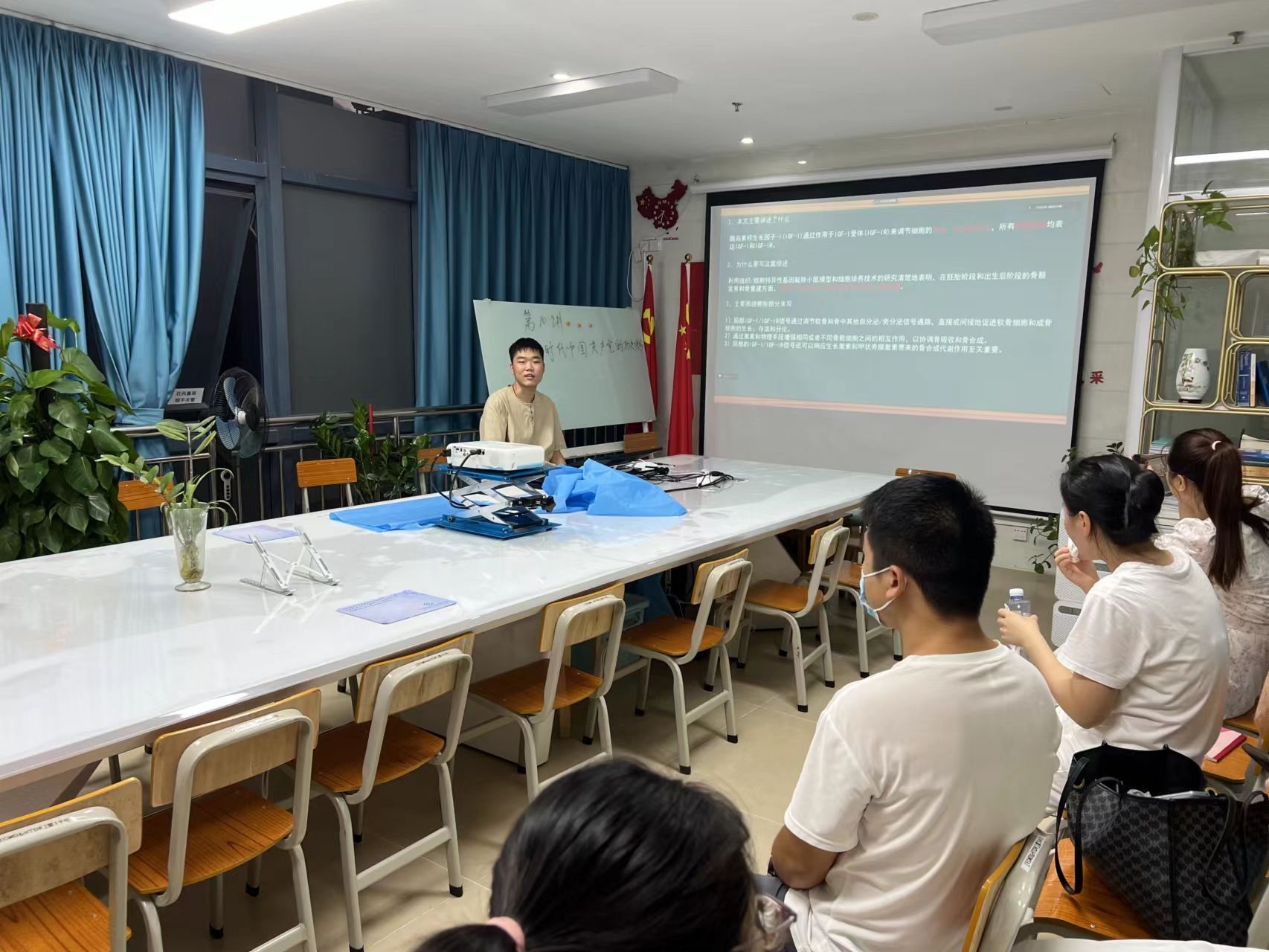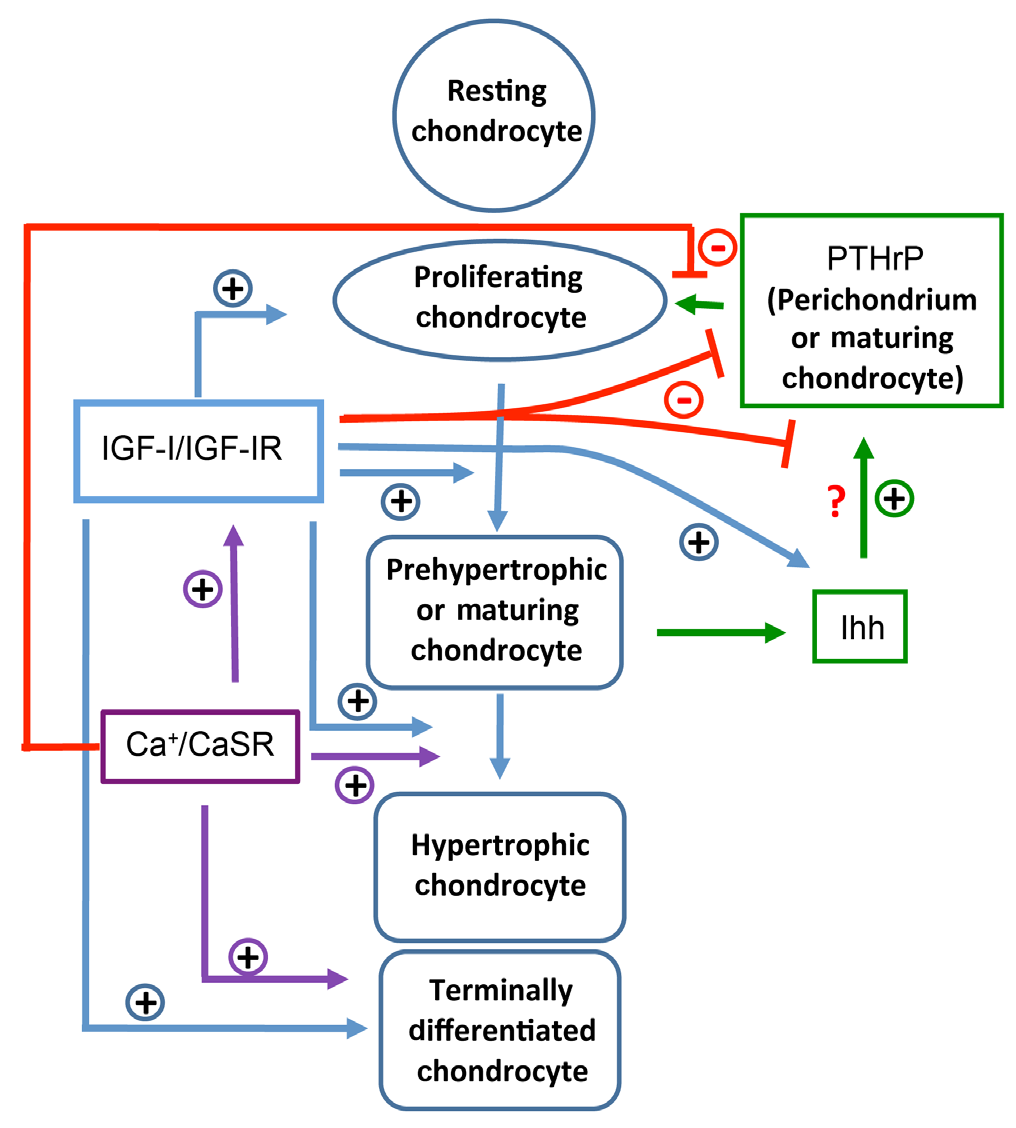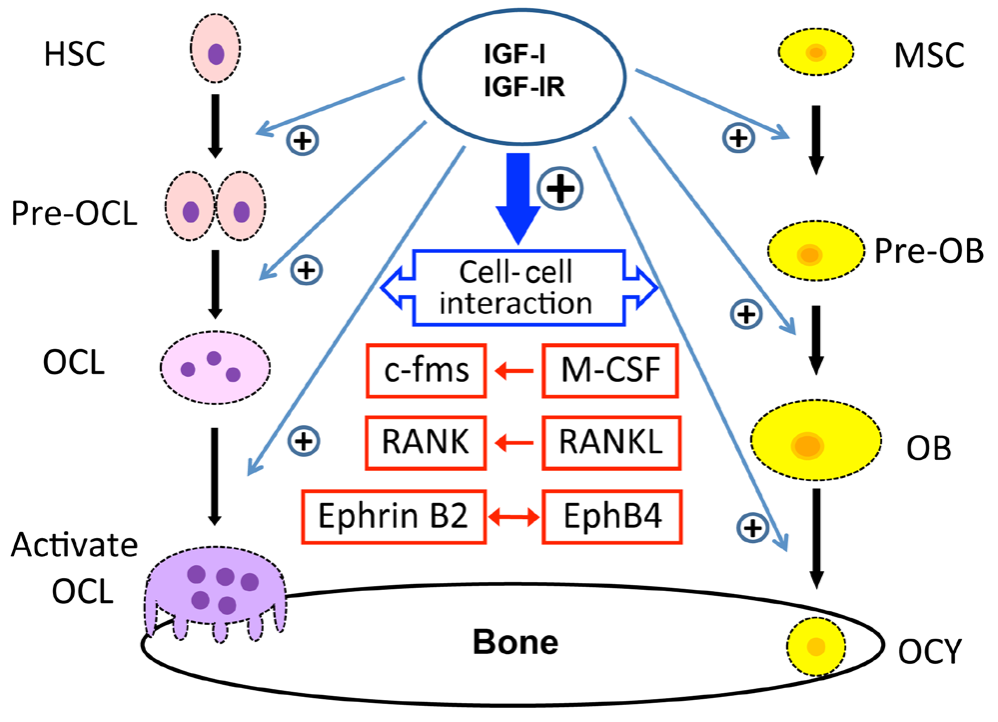
Autocrine and Paracrine Actions of IGF-I Signaling in Skeletal Development
IGF-1信号通路在骨骼发育中的自分泌和旁分泌作用
主讲人:苏诗博
Bone Research 丨Received: 23 May 2013丨Accepted: 29 June 2013 丨Published online: 08 July 2013 丨Page:249-259 丨DOI: 10.4248/BR201303003


Abstract:
Insulin-like growth factor-I (IGF-I) regulates cell growth, survival, and differentiation by acting on the IGF-I receptor, (IGF-IR)-a tyrosine kinase receptor, which elicits diverse intracellular signaling responses. All skeletal cells express IGF-I and IGF-IR. Recent studies using tissue/cell-specific gene knockout mouse models and cell culture techniques have clearly demonstrated that locally produced IGF-I is more critical than the systemic IGF-I in supporting embryonic and postnatal skeletal development and bone remodeling. Local IGF-I/IGF-IR signaling promotes the growth, survival and differentiation of chondrocytes and osteoblasts, directly and indirectly, by altering other autocrine/paracrine signaling pathways in cartilage and bone,and by enhancing interactions among these skeletal cells through hormonal and physical means. Moreover, local IGF-I/IGF-IR signaling is critical for the anabolic bone actions of growth hormone and parathyroidhormone. Herein, we review evidence supporting the actions of local IGF-I/IGF-IR in the above aspects of skeletal development and remodeling.
摘要:
胰岛素样生长因子-I(IGF-I)通过作用于IGF-I受体(IGF-IR)--一种酪氨酸激酶受体,引起不同的细胞内信号反应来调节细胞生长、生存和分化。所有骨骼细胞都表达IGF-I和IGF-IR。最近使用组织/细胞特异性基因敲除小鼠模型和细胞培养技术的研究清楚地表明,在支持胚胎和产后骨骼发育和骨重塑方面,局部产生的IGF-I比全身的IGF-I更为关键。
局部IGF-I/IGF-IR信号通过改变软骨和骨的其他自分泌/旁分泌信号通路,以及通过激素和物理手段加强这些骨骼细胞之间的相互作用,直接或间接地促进软骨细胞和成骨细胞的生长、存活和分化。此外,局部IGF-I/IGF-IR信号对于生长激素和甲状旁腺激素的合成骨作用至关重要。在此,我们回顾了支持局部IGF-I/IGF-IR在骨骼发育和重塑的上述方面作用的证据。

